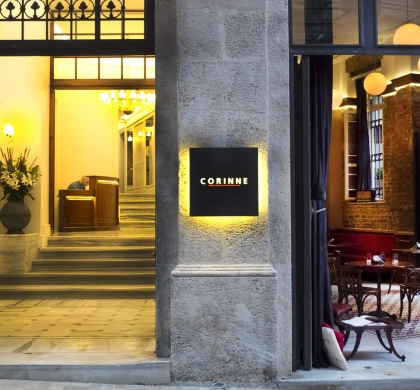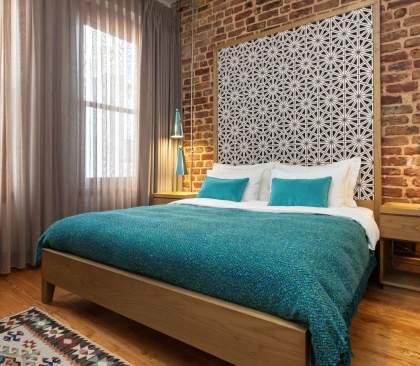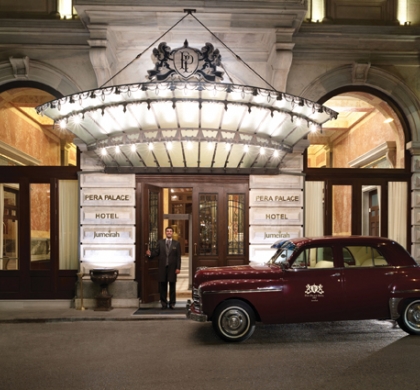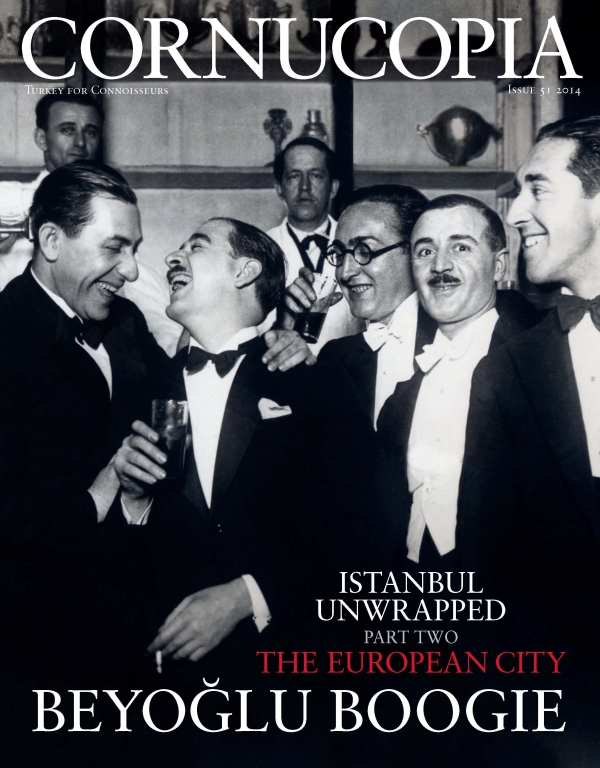Buy or gift a stand-alone digital subscription and get unlimited access to dozens of back issues for just £18.99 / $18.99 a year.
Please register at www.exacteditions.com/digital/cornucopia with your subscriber account number or contact subscriptions@cornucopia.net
Buy a digital subscription Go to the Digital EditionHidden among the concrete blocks of Teşvikiye is a magnificent mansion riddled with mystery. Masquerading as a Venetian palazzo, Tozan House has disappearing passages, secret stairs and eccentricities it shares with its creator. Andrew Finkel investigates. Photographs by Simon Upton
Now you see it, now you don’t. Tucked in amid the “new brutalism” of the 1960s and 1970s apartment blocks in the Istanbul neighbourhood of Teşvikiye is, for all intents and purposes, a Venetian palazzo. It is easy to overlook – the top storey is covered by another three floors belonging to the building next door. Easier still to walk past, down Hüsrev Gerede Caddesi, without noticing the plaque commemorating the house’s one-time owner, Safvet Lütfi Tozan.
However, Safvet Lütfi Bey would no doubt have approved of this anonymity. The ltalianate mansion that bears his name also bears his eccentricities, including various bolt holes that appear to lead nowhere. There are tales of hidden staircases leading out to the spacious back garden and there is a rumour, too, of a tunnel leading right down to the shoreline at Beşiktaş.
The house once contained many fine objecrs, the lifetime collection of a man who is rumoured to have had many secret aspects to his life. It is said that he sold arms to Franco and during the Second World War was a double agent, spying for the English and being chased by the Gestapo. He also procured arms for his own country.
Safvet Lütfi Bey’s appearance was dashing; his fortune was vast. The story goes that he was the sole survivor of a plane that crash-landed in the Black Sea. Found clinging to a fisherman’s boat, he was taken to lstanbul, where he appeared before the American consulate, to whom he gave some prime intelligence concerning the fate of the Resistance in Belgrade, gleaned from a German officer at a dinner party in Bucharest.
Rare for a house in Turkey, but befitting the swashbuckling habits of its owner, the Tozan Apartmanı has a baronial feel. The great blocks of stone of the great rounded pentagonal entrance hall are in fact an illusion-trompe l’oeil painted on the plaster. lt is easy to imagine the shadows of an Errol Flynn-style sword battle emanating from the flickering light of the fireplace. Except that the hearth in the living room is false as well.
The sombre walnut panelling and staircase are real enough, as are the Bavarian crystal lampshades and Baccarat chandeliers. The house served at one time after its construction in the 1920s as the guesthouse for the Mobil Oil Company, whom Lütfi Bey went on to represent. The network of kitchens and servants’ quarters below stairs was clearly capable of lavish entertainment.
The Italianate garden is spacious and surprisingly rustic for so central a location. It is overlooked at a respectable distance by the Palais d’Italie, once to have been the Italian embassy, but now a technical college.
The master bedroom, on the first floor, shares the odd pentagonal shape of the entrance hall. It has an unusual additional alcove which appears to have housed the bed concealed behind a curious gilded wrought-iron partition.
After Safvet Lüfti Tozan’s death, his possessions were dispersed at an auction still famous more than twenty years on for having provided the seed for many of today’s important art and furniture collections. “lt lasted days and the bidding went three times higher than the estimates,” recalls Raffi Portakal, the Istanbul art expert whose father oversaw the bidding. It is the furniture and carpets that most people remember. The proceeds and house went to the educational foundation, Darüşşafaka. Now [1996] the foundation has sold the house and it is back on the market at a serious price, probably nor far short of the Venetian palazzo on which it is modelled.
When Mike Read, the plant conservation officer for Fauna and Flora International (FFI), uncovered a large illegal trade in wild bulbs from Turkey in the 1980s, he and his colleagues were greatly concerned…
The finest school of sculpture in all antiquity was in Aphrodisias. Above the valleys of the Meander in Turkey’s Aegean hinterland, this favourite city of the Emperor Augustus remained largely unknown until the photographer Ara Güler brought it to the attention of the Princeton scholar Kenan T Erim in 1959. Here Ara Güler returns to the city and John Julius Norwich recalls Professor Erim and his first impressions of the sculptures that took his breath away.
The Mosque of Esrefoğlu in Beyşehır, is one of the most beautiful in Anatolia. Built in 1298, it recalls earlier Central Asian traditions. Wooden columns with carved capitals support the splendid roof.
Tracing the history of this beautiful fruit is like reading a fairy tale. It spans continents and cultures like no other fruit, from its presumed natural habitat in the foothills of the Himalayas to the scented paradise gardens of the eastern Mediterranean and the orange groves of California.
More cookery features
The bunch of Narince grapes Ali Riza Diren is holding in his Anatolian vineyard (illustrated in this vintage issue of Cornucopia) is the raw material of a well kept secret. Tokat’s is an ancient wine, and its production was revived by Ali Riza’s father, to the delight of ambassadors and the approval of a Sotheby’s connoisseur.
High on the central Anatolian plateau, the craggy undulations of Cappadocia’s volcanic landscape conceal a silent world: countless Byzantine sancturies and cathedrals lovingly hollowed from the rock. David Barchard finds two valleys undisturbed since the Dark Ages. Photographs by Sigurd Kranendonk
Amasya, Tokat and Merzifon were once on the trade routes to China, centres of scholarship and commerce. Today they are secluded enclaves of traditional pleasures. John Carswell enjoys a feast of delicate architecture and heady wines. Photographs by Simon Upton





Cornucopia works in partnership with the digital publishing platform Exact Editions to offer individual and institutional subscribers unlimited access to a searchable archive of fascinating back issues and every newly published issue. The digital edition of Cornucopia is available cross-platform on web, iOS and Android and offers a comprehensive search function, allowing the title’s cultural content to be delved into at the touch of a button.
Digital Subscription: £18.99 / $18.99 (1 year)
Subscribe now